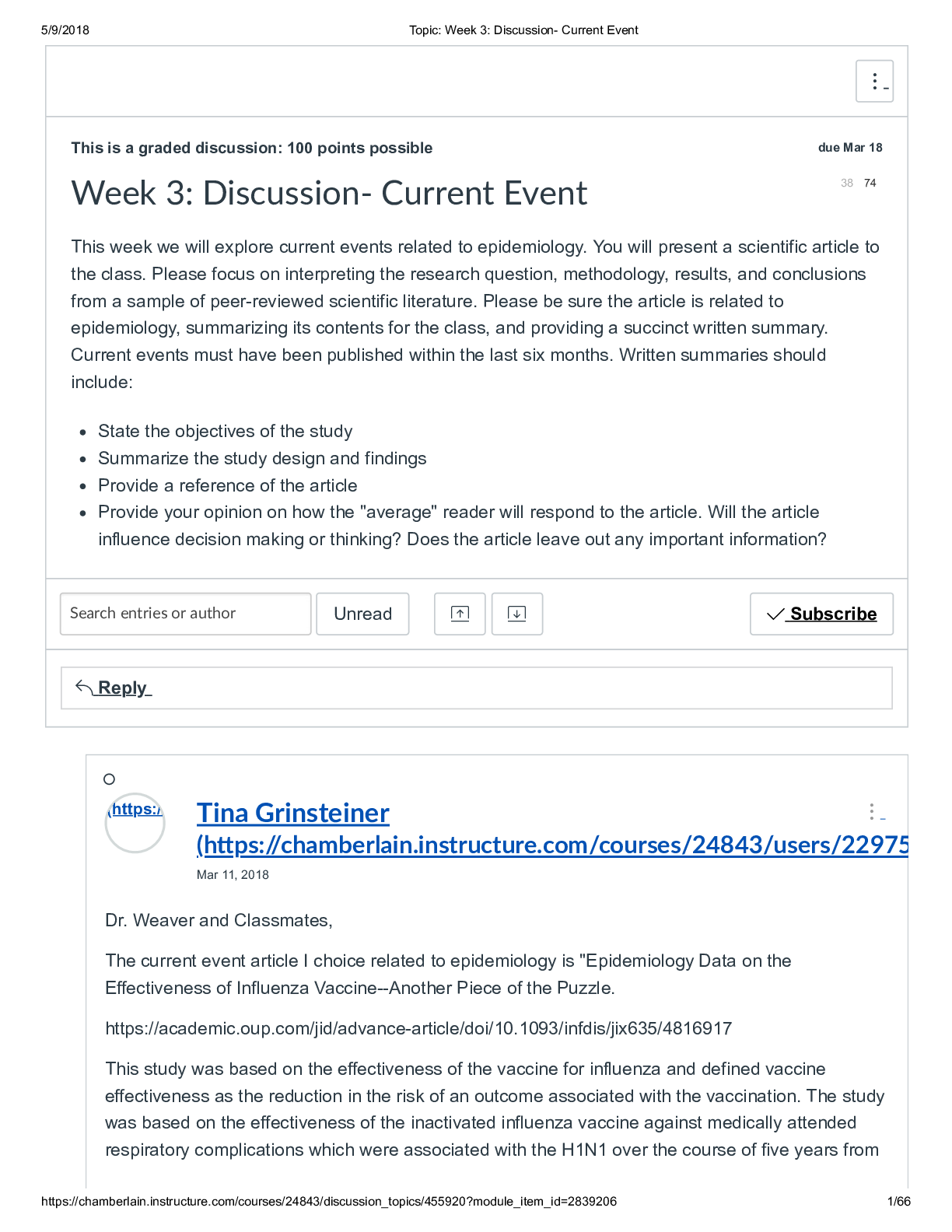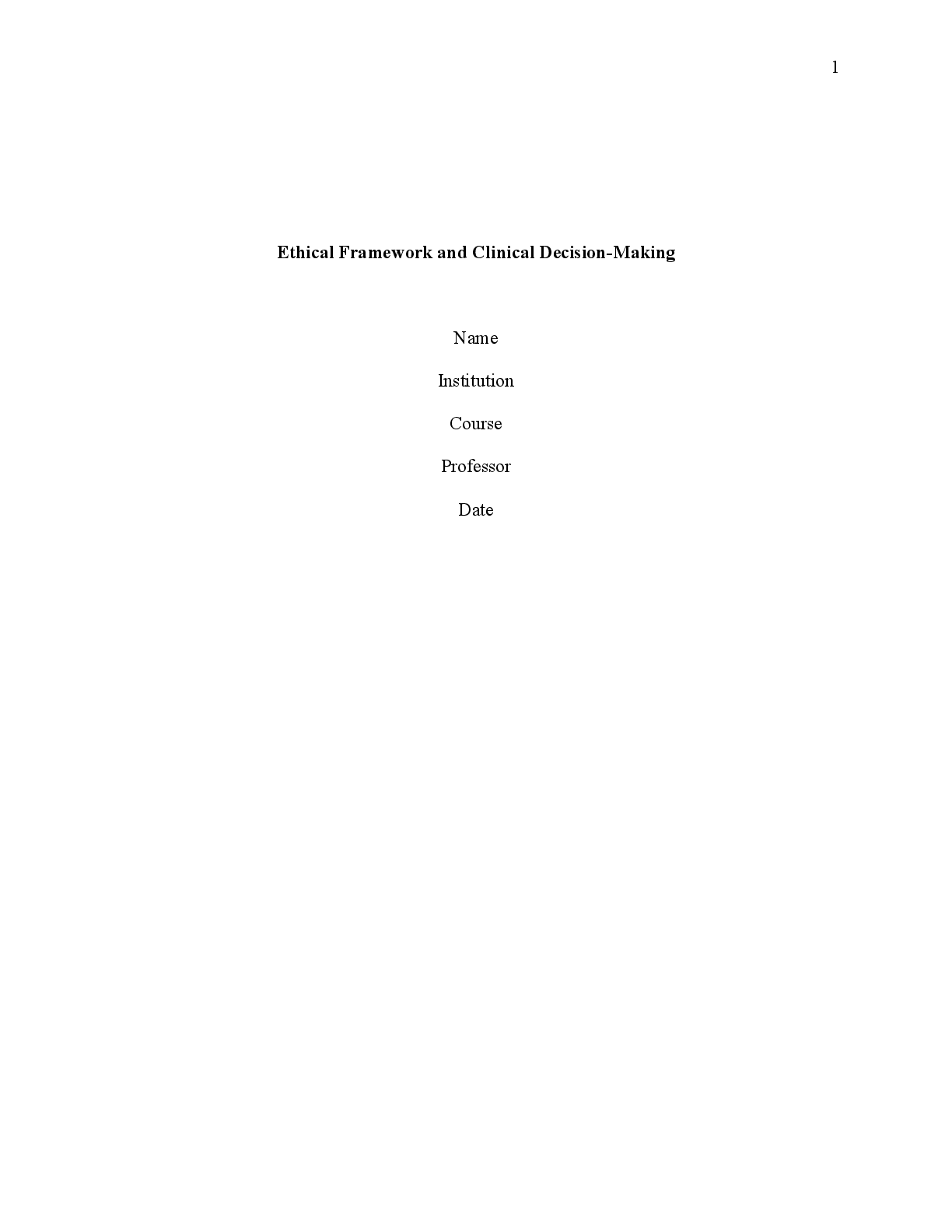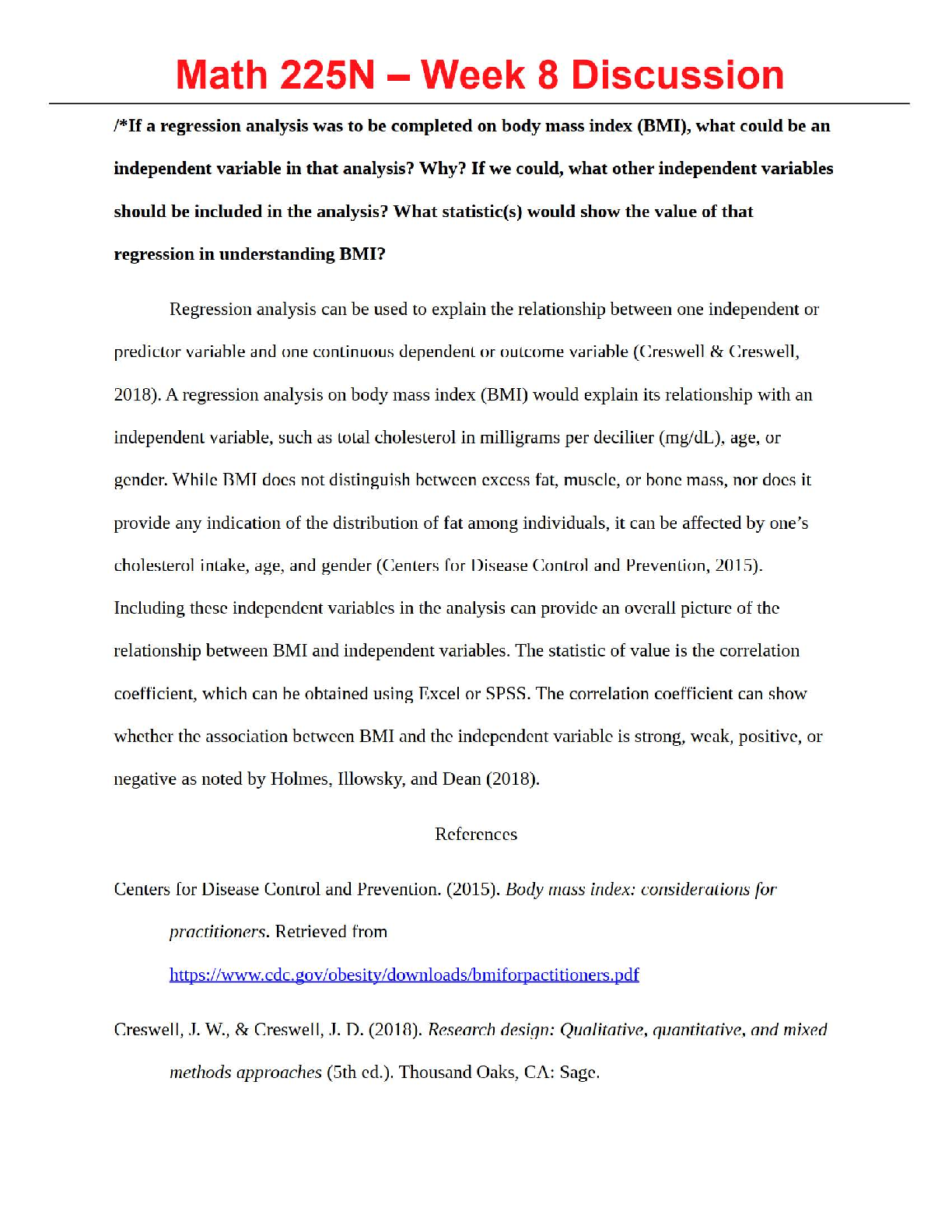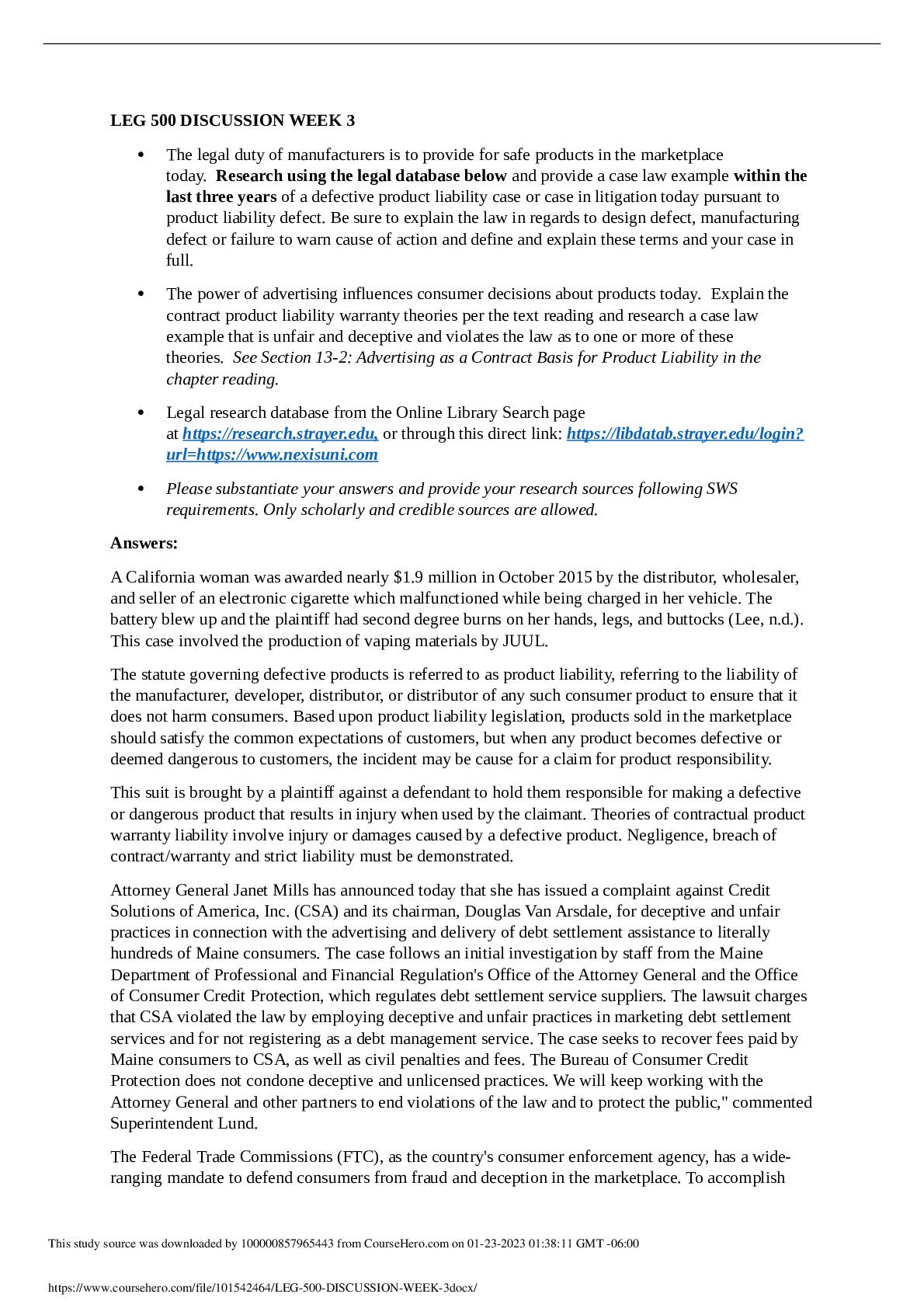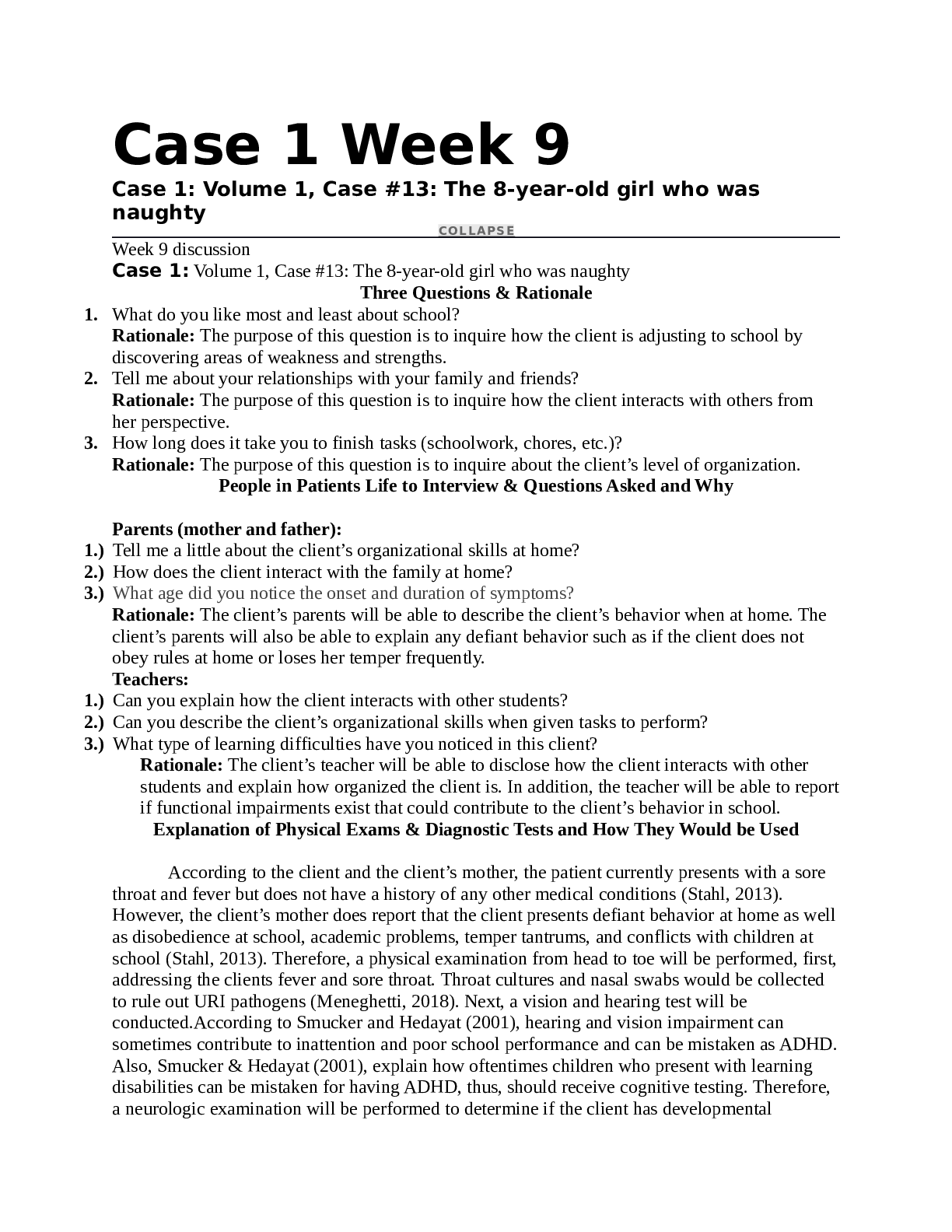NR361 Week 6 Discussion Question, Detractors in our Environments
Document Content and Description Below
Week 6: Distractors in our Environment (graded)
Distractions are everywhere. They may include cellphones, the alarms sounding for multiple
different reasons, overhead paging, monitors beeping, and s
...
taff interrupting our thoughts.
Give an example of an ethical or legal issue that may arise if a patient has a poor outcome or
sentinel event because of a distraction such as alarm fatigue. What does evidence reveal
about alarm fatigue and distraction when it comes to patient safety?
Bingley Response:
Distractions and interruptions consist of anything that disrupts an individual from the current
task by diverting one's attention. The advancement in technology has greatly contributed to
the increase in the number of distractors in our environment. Most of the technological
devices have become part of us since we need them for connectivity, comfort and work. In
the Health care industry, many medical devices have alarm systems. Examples include:
bedside physiologic monitors such as ECG (electrocardiogram) machines, pulse oximetry
devices, and monitors of blood pressure and other parameters; infusion pumps; and
ventilators. These alarm-equipped devices are very essential in enhancing and providing safe
care to patients. However, these devices may present challenges for health care organizations.
Ethical problems may arise from such environmental distractors within hospital settings.
Negligence on the part of the nurses may for instance lead to avoidable or preventable deaths.
For instance, an alarm system, say that monitors oxygen use may have been set
inappropriately leading to a premature cut of oxygen supply and hence the death of a patient.
Equally, an admitted yet disturbed patient may be tempted or can actually commit suicide
based on the misinterpretation or the malfunctioning of the overwhelming alarm systems.
Sentinel events mostly arise due to the environmental distractors as occasioned by the
presence of the alarm equipped devices. The major contributing factors to most sentinel
events include the absence or the inadequacy of alarm systems, inaudibility of the alarm
systems, improper alarm settings and the likelihood that alarm systems have been
inappropriately turned off.
Alarm fatigue describes a situation where one is likely to become desensitized to alarms as a
result of being exposed to a large and frequent number of the same. It is essentially a sensory
overload when clinicians are exposed to an excessive number of alarms, which can result in
desensitization to alarms and missed alarms.
Research has demonstrated that 72% to 99% of clinical alarms are false and has consequently
led to many patient deaths (Sendelbach & Funk, 2013). This is a worrying trend since the
purpose of clinical alarms is to enhance safety by alerting clinicians to deviations from a
predetermined normal status. Alarm fatigue has become an increasingly critical safety issue
in the clinical practises of today. Patient deaths attributed to alarm fatigue are a reason of
concern since studies have demonstrated that most alarm signals have no clinical
significance. High percentage of alarm signals creates an “a cry wolf” situation that staff will
respond to the alarm the percentage of time they deem it reliable. The consequence of such
laxity is delayed response to truly genuine cases hence leading to otherwise preventable
deaths. Phone distractions have also put patient safety at risk by creating an overwhelming
environment to clinicians. The cell phone interruptions lead to an increased risk of error since
they divert the attention of the subject in executing their duties. Studies show that each such
interruption (often happens after every two minutes) results in a 12.7% increased risk of a
medication error and that the error rate tripled when a nurse was interrupted six times (Beyea,
2007).
This study source was downloaded by 100000831988016 from CourseHero.com on 05-02-2022 15:09:34 GMT -05:00
https://www.coursehero.com/file/21817232/Week-6-DQ-Distractors/
2
Reference
Hebda, T. & Czar, P. (2013). Handbook of informatics for nurses & healthcare
professionals (5th ed.). Boston, MA: Pearson.
Sendelbach, S., & Funk, M. (2013). Alarm Fatigue. AACN Advanced Critical Care, 24(4),
378-386. http://dx.doi.org/10.1097/nci.0b013e3182a903f9
Beyea, S. (2007). Distractions, Interruptions, and Patient Safety. AORN Journal, 86(1), 109-
112. http://dx.doi.org/10.1016/j.aorn.2007.06.015
[Show More]
Last updated: 8 months ago
Preview 1 out of 2 pages




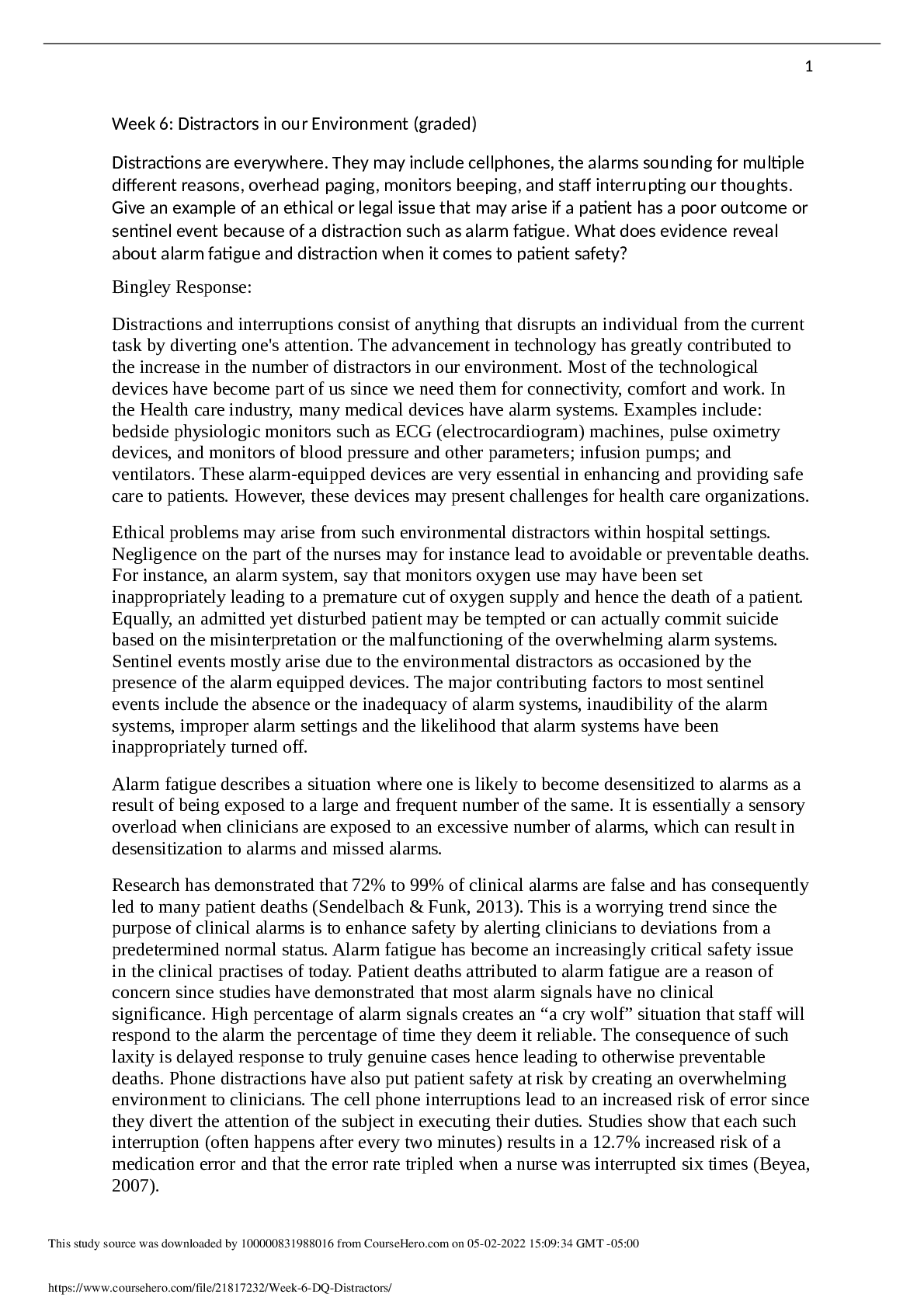

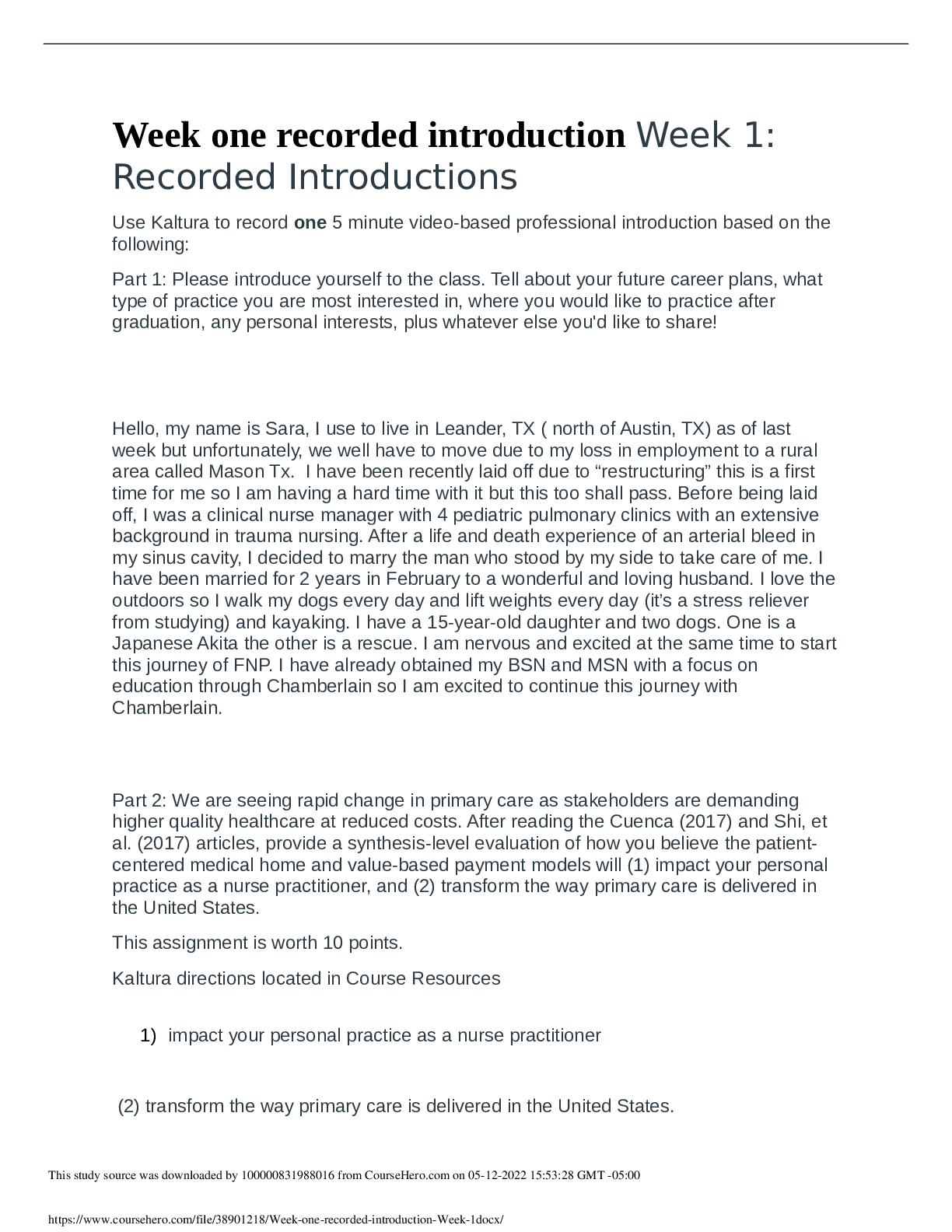



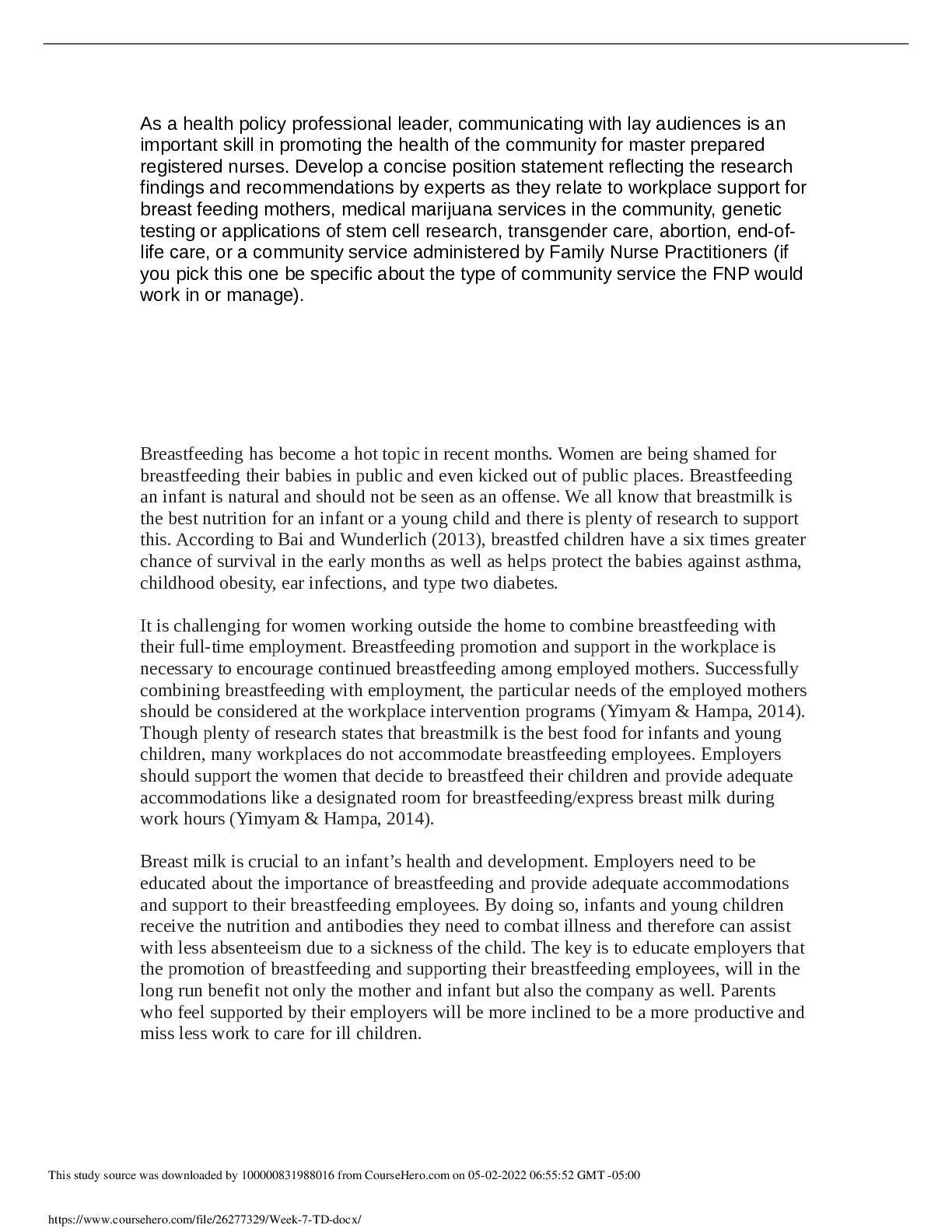
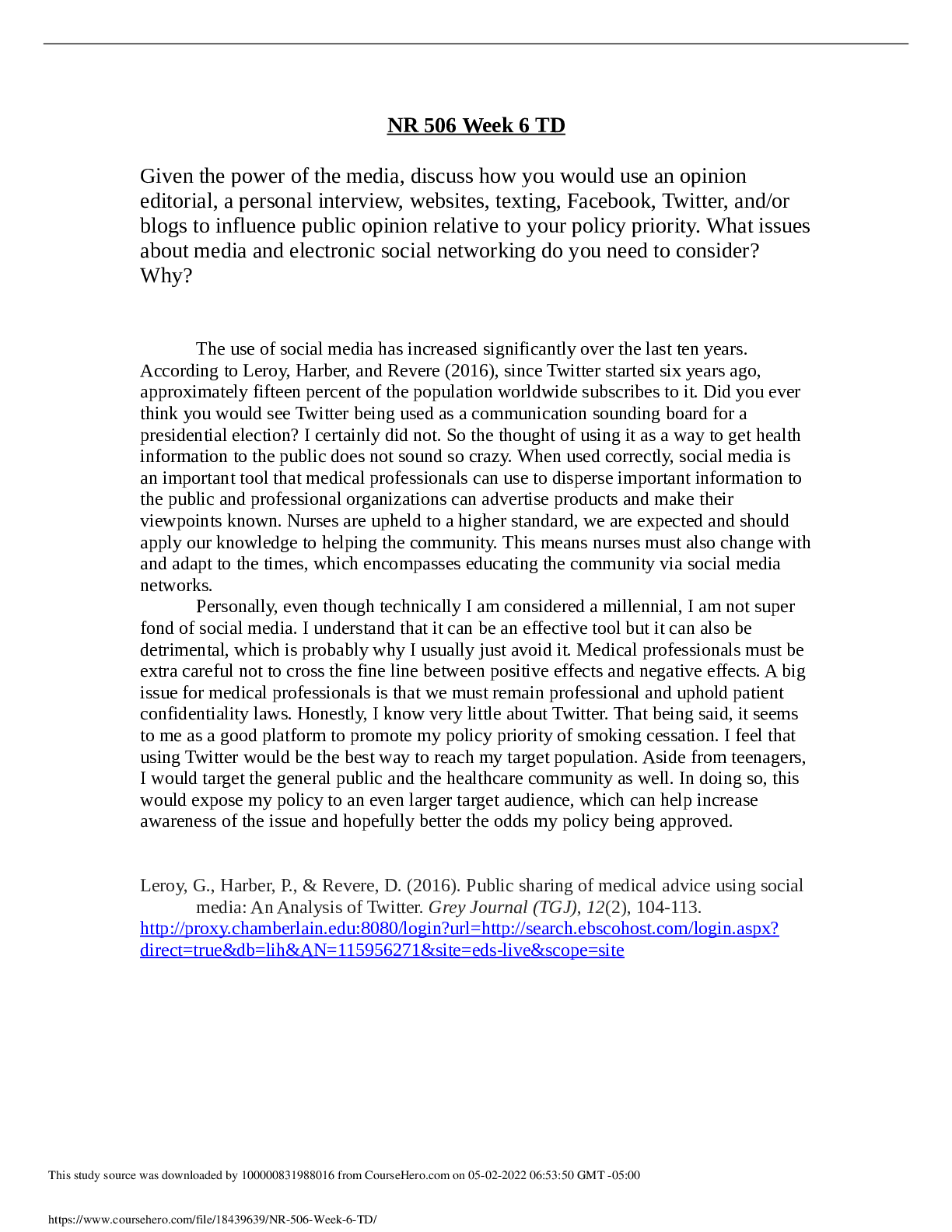
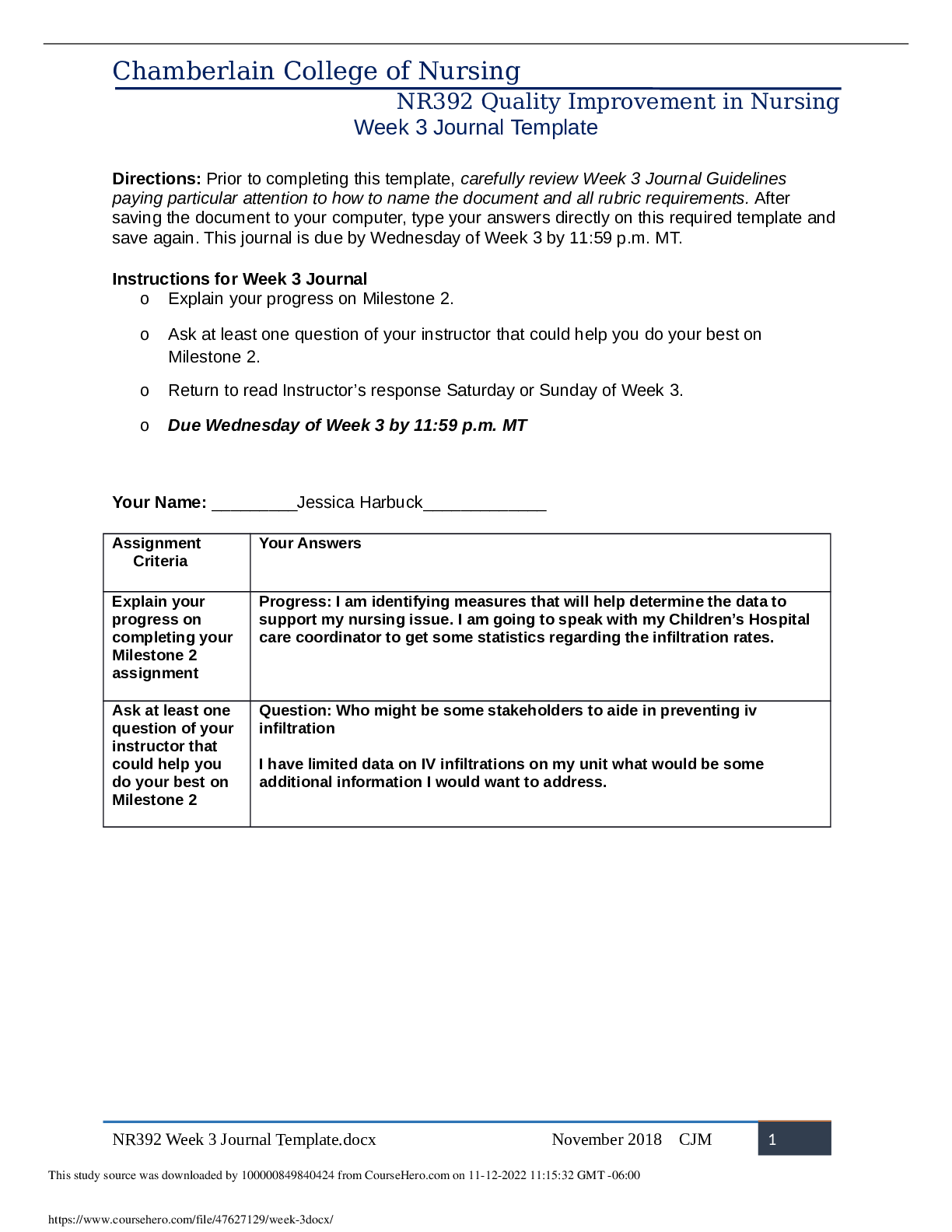
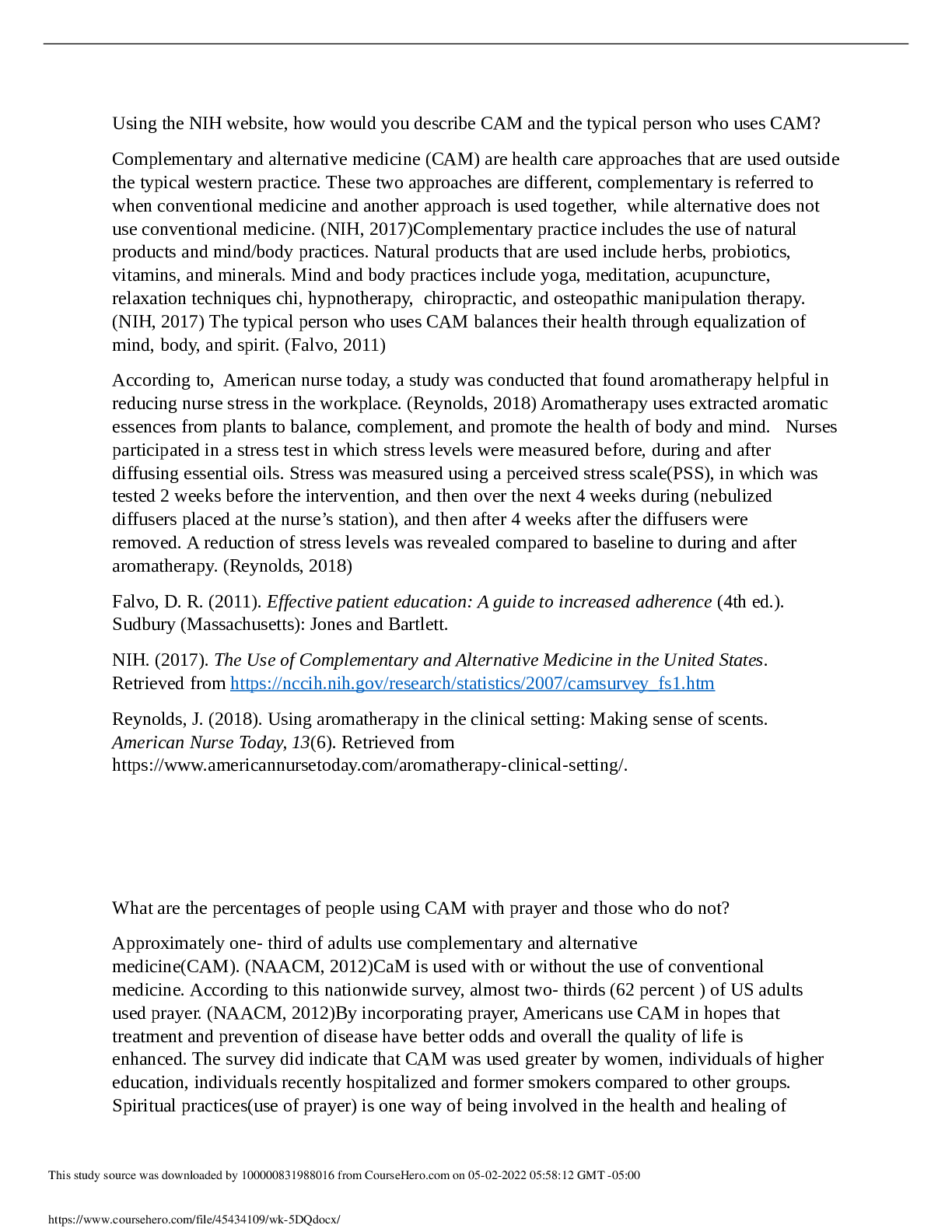
.png)

